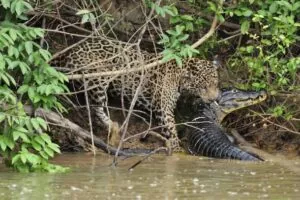Easter Island Archaeology
Easter Island Archaeology
The extraordinary archaeology and tragic cultural and environmental history of Easter Island is a source of continual wonder for international travelers. It represents a possible foreshadowing of “the shape of things to come”, only this time, planetwide. We offer fine services on that remote island, which is owned by Chile even though it lies five hours by jet (!!) west of Santiago, 40% of the way to New Zealand.
Easter Island is the remotest island in the world, and it was not until 800-1200 AD that humans, specifically Polynesians, arrived to the island in large wooden, seafaring canoes. These people accidentally introduced the first rats to the island, and between 1200 and 1675 AD, a combination of these people felling the extensive forests, burning of habitat, burning of wood for fuel, hunting of all the endemic birds and mammals, and introducing rats led to complete environmental and social collapse.
In 1500, this subtropical island of only 63 square miles supported a human population of approximately 15,000, but in the following 175 years, the human population managed to consume every last native animal and tree, and the villages suffered privation and internecine warfare. When in 1722 the first European explorers reached the island, they found only 2,000 stunted, malnourished islanders. In sum, a total disaster.
From 1200 to 1600 AD, the “Rapanui”, as the islanders called themselves, carved, transported, and erected 113 famous stone heads, many of them 15-33 feet tall. Large wooden rollers and elaborate wooden scaffolding and supports would have been required to move these 15-86-metric-ton heads across the island and to erect them in their final positions on the coast.
As it is, due to the universal depredations by the Rapanui, the impressively-tall native palm trees completely disappeared, as did the seven species of unique birds, most of the seabird colonies, two species of unique mammals, and most of the island’s scores of endemic species of plants and even insects. The only endemic animal life left on the island are ten species of almost invisibly-small insects living in small patches of ferns at the mouths of caves.
The bizarre vista of rows of towering stone heads gazing impassively out to sea, a monument to total environmental collapse, draws travelers from all over the world, as if to experience in real life what Joseph Conrad termed “the fascination of the abomination”.
Hence, Easter Island is not for wildlife-lovers…that’s for sure. But it is uniquely compelling in its own stark, dark way. If one did not know the story of the huge stone heads in the treeless grasslands, one could simply enjoy the scenery, but it is critical that all opinion makers from around the world visit this remote Pacific outpost to see first hand the future that we must at all costs avoid for our planet. The island offers hotels from good to outstanding, so ask us about the best options.







